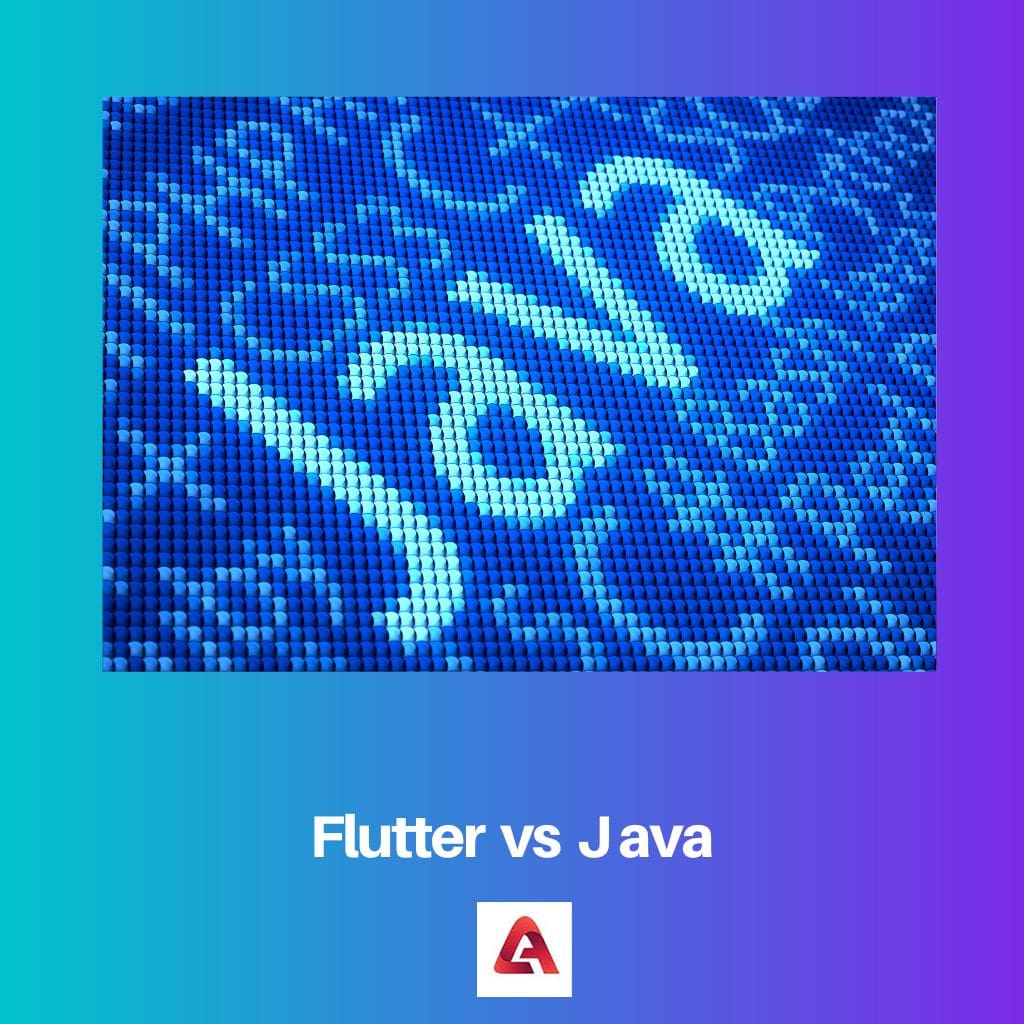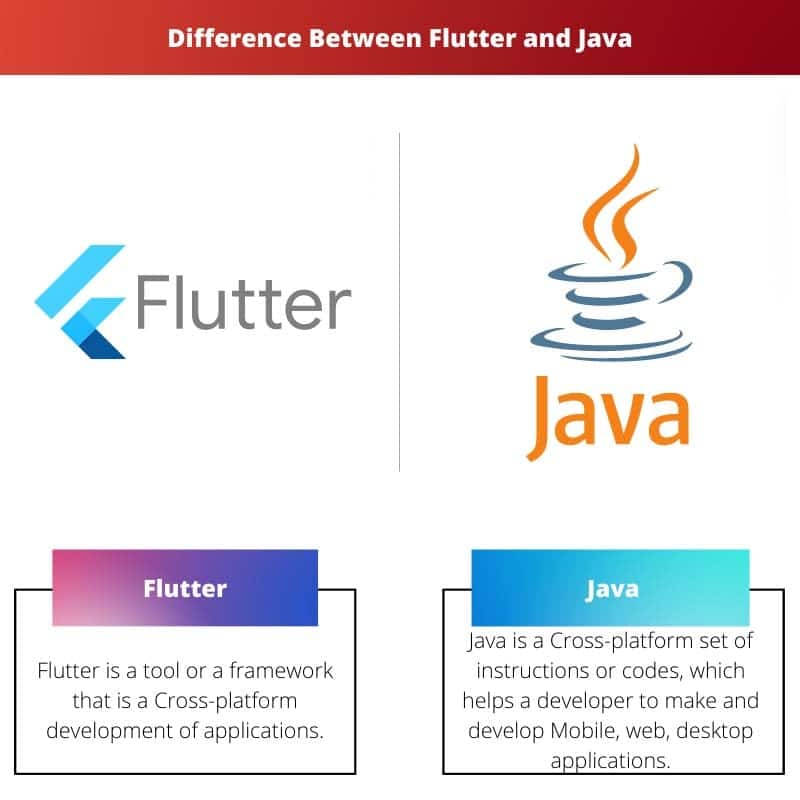Since the technology has taken a new fold towards development, new and advanced frameworks have been introduced to reduce the future complexities of making modern mobile applications for IOS and Android.
Among the many, flutter and Java has emerged as one of the finest frameworks the developers have developed. If any of these perfect works, why do we need another? Let’s see their definitions and differences.
Key Takeaways
- Flutter is a mobile app development framework, while Java is a programming language for various applications.
- Flutter offers a hot reload feature for faster development, while Java requires compiling before deployment.
- Flutter uses Dart programming language, while Java uses its language, making it more suitable for developing mobile apps.

Flutter vs Java
The difference between Flutter and Java is that the first is a cross-platform framework developed by Google in 2015. In contrast, Java is an object-oriented language for desktop, mobile, and web applications and the most widely used language by developers.
It was developed by James Gosling at Sun Microsystems and released in 1995.
Flutter is an open-source UI software development kit (SDK) meant to design mobile applications for Linux, iOS, Mac, Windows, etc.
To make a rapid application for the web or any other desktop application, Dart programming language is used and implemented for faster speed and accuracy.
It is free to use and an open UI framework maintained by ECMA standards.
Java was developed way long before many languages came into existence. It is used for computing platforms and developing mobile, web application and many more platforms.
Much of the work is done through Java, and many applications won’t work without the codes. Java is faster, more secure, and a source to rely on.
Comparison Table
| Parameters of Comparison | Flutter | Java |
|---|---|---|
| Type | Cross-platform applications can be developed with the Flutter tool. | It uses a set of instructions called codes or a program to design Cross-platform applications. |
| Year of development | This was developed and unveiled in 2015 by Google. | It was developed in 1995 by James Gosling. |
| Code | Flutter uses Dart programming to write codes. | Java is a language that uses codes. |
| Source to obtain | Developed by Google, it is open-source. | Developed by Sun Microsystems, it is free to use. |
| Performance | It provides material design and gives out effective UI | It does not give much expressible UI and doesn’t give material design. |
What is Flutter?
Designing an app depends on the platform it is working on. Flutter is a tool or a framework that is a Cross-platform development of applications.
Flutter is fast and beautiful because of its UI response in nature. The language used by Flutter is the Dart language. It is similar to other languages like Kotlin and Swift.
The major property of Flutter a Hot-Reloading. It means that whenever a developer changes the code, it reflects as the output on the spot.
Besides, you must write code once, and deployment onto any platform or OS is possible. The property of Cross-platform framework.
The performance by Flutter is great. Gives out 60fps (frame per second) on a device.
It is because it was developed by one of the strongest search engines, Google.
Also, the UI is very responsive. That makes the design appreciable.
It provides material designs and has a single codebase. It also allows quick prototyping for development. It is free, and anyone can access this framework without any charges.
It has an open-source community that keeps developing it for a better user experience.
What is Java?
Java is a Cross-platform set of instructions or codes which helps a developer make and develop Mobile, web, and desktop applications.
Java has a vast set of libraries to develop applications, making the coding and development part robust and easy. Also, it is widely used in the field of Technology.
Java is easy to learn and has applications. The syntax, logic, and implementation part is not as hard as expected. It runs on various platforms like JDK, eclipse, etc.
In Java, you can easily manage the code, and it also has an excellent tooling part. A course of a few months can take a beginner or a learner to an advanced programmer and can join the developer team too.
Developed by James Gosling in 1995, it was initially developed for interactive television, but it seemed an updated part as the televisions supported cable systems.
The language is robust in nature, portable, platform-independent, Simple and much more.
Java’s dynamic nature and multi-threading nature make it accessible and a preferable choice by developers. Currently, Java is used in internet programming, mobile devices, games, and e-commerce websites.
It was developed at Sun Microsystems in 1995 and was believed to be one the best 10 products of that year.

Main Differences Between Flutter and Java
- Java has a huge set of libraries, making it more dynamic, whereas Flutter is a cross-platform language developed by Google on Dart.
- Flutter provides materialistic designs and an effective and responsive UI design that gives a better idea while developing, but in the case of Java, it is unavailable. Neither the material part nor any UI design thing.
- Flutter gives out more precise results in lesser time as compared to Java.
- Flutter is new in the market and was launched by Google, so the developers are less than the latter. Java came into the market, making it a bit more powerful and large numbers of developers are available.
- The specific advantage of Flutter over Java is the hot reloading aspect. While In the case of Flutter, the response after the changes made in the code is swift and visible, but in Java, it takes time since the developers work on it.



